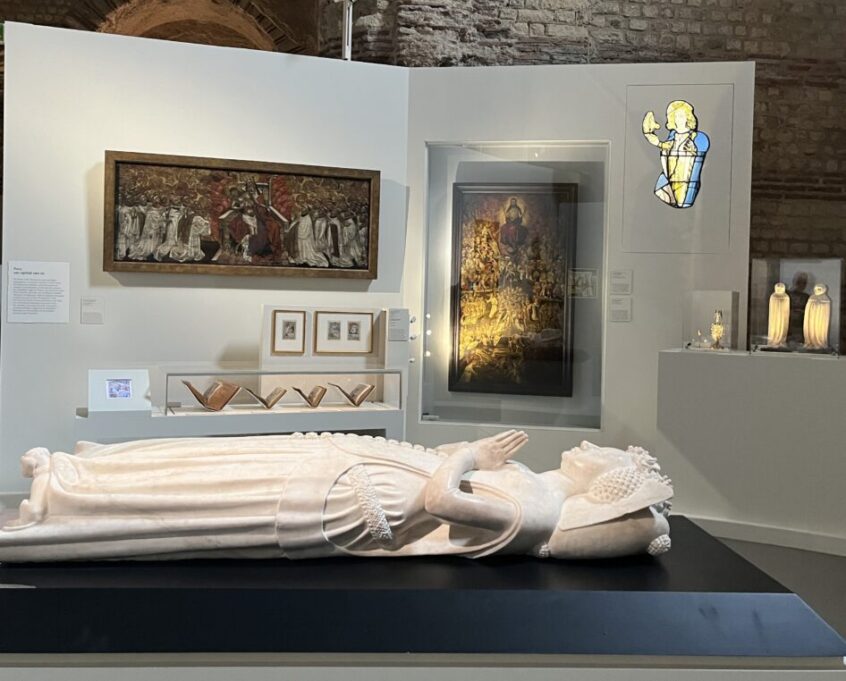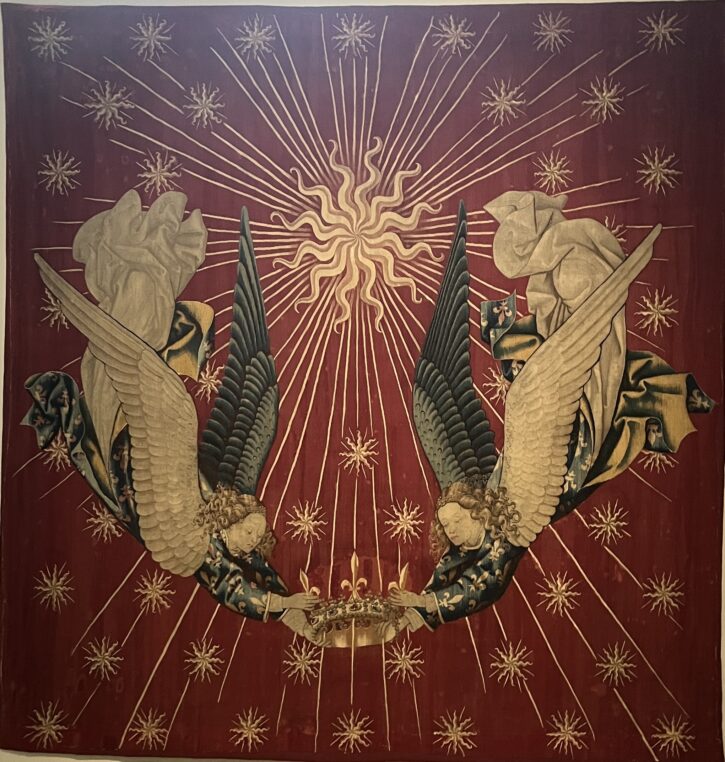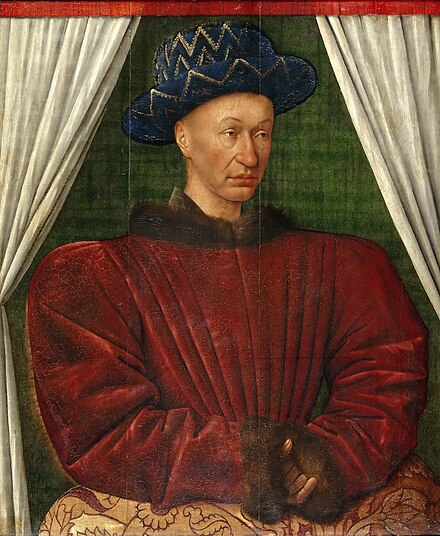
Jean Fouquet, Portrait of Charles VII, cir 1450-1455, Paris, Musée du Louvre © RMN-Grand Palais, Tony Querrec
I have to admit, I did not remember anything about Charles VII before listening to Mathieu Deldicque and Maxence Hermant, at Musée de Cluny, telling us the story of this French king, 1422-1461. He is the 18 year old dauphin, whom Joan of Arc led to be crowned, remember? He inherited a messy kingdom from his father Charles VI, Le Fou, who reigned or forty years with periods of craziness and focused on military conquests and reestablishing a strong army. He retrieved Orléans, Paris, Normandy, Guyenne and ended the 100 year’s war. Artistically influenced by both the Flanders and Italy, his entourage of courtiers commissioned illuminated manuscripts, sculptures, stained glass windows and tapestries, planting the seeds of an extraordinary artistic revival which led to the renaissance. He enlarged the kingdom which started with the Berry, around Bourges. It was squeezed then, between the Duke of Burgundy and England. By the time he died, it included Picardie, Normandy, Guyenne and Languedoc.
The collection of 130 artworks is very exciting with 40 precious Livres d’Heures and other rare illuminated books lent by Bibliothèque Nationale and the exceptional canopy in tapestry used by Charles VII when he exercised his justice, lent by the Louvre. For the first time, the Triptyque de Dreux Budé (1450) by André d’Ypres, is reunited between the Louvre, the Getty Museum and Musée Fabre in Montpellier. And Jean Fouquet, who has a magical room to himself in Chantilly, is the star of the show with his portrait of Charles VII. Various “pleurants” are also exhibited with a singular and unique beauty.

Cathédrale d’Angers’ stained glass windows, two “pleurants” from Jean de Berry’s funerary monument in Bourges, cir 1450, St Symphorien or Louis de Chatillon, 1420-1440, lent by Morogues, near Bourges,
The scenography mixes sculpture, stained glass and tapestries with great maestria and the curators managed to give a whimsical atmosphere to a topic which could otherwise be very austere. Two windows come from the Angers Cathedral and were lent because they were being restored. A polychrome stone sculpture of Sainte Marie Madeleine came from Marseille. It was made for Avignon in 1446 and offered by Jean Rolin, bishop of Autun. We are still in the period of the 100 year’s war (1337-1453) and yet artistic exuberance is at its top. The show exhibits the artworks geographically: Picardie, Brittany, Berry, Lyon, are staged in a semi circle, with the tomb of Anne de Bourgogne, Duchess of Bedford, as a centerpiece and a special focus on tapestries.
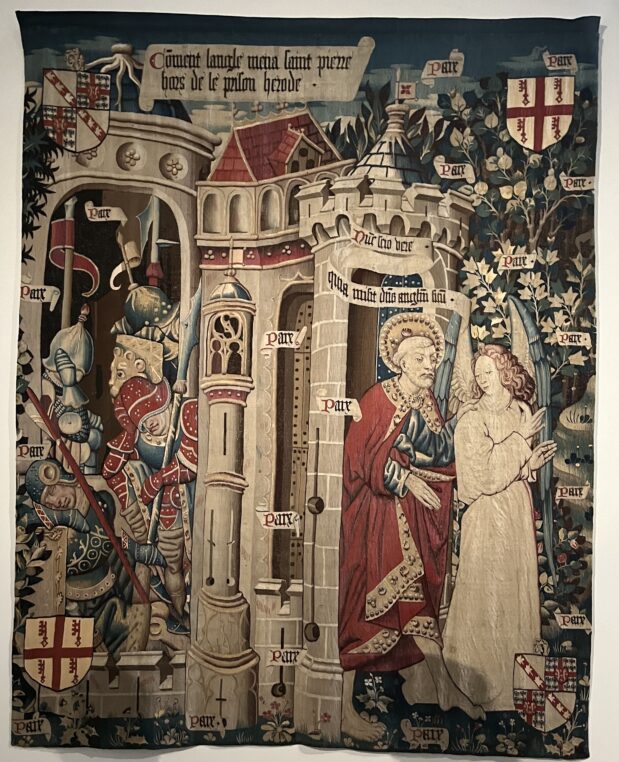
After a drawing by Jacques Daret, “Delivrerance of St Peter”, before 1461, Southern Netherlands, Paris Musée de Cluny
Charles VII did not inherit not buy art himself, but he was surrounded by collectors such as Jacques Coeur, the Jouvenel des Ursins, the treasurer Etienne Chevalier, Dreux Budé… who were great bibliophiles and commissioned works from the most avant-garde artists of the time. His nickname was “the well served king”.

The chess. players, Lyon cir 1450, © RMN-Grand Palais (musée de Cluny – musée national du Moyen Âge) photo Mathieu Rabeau
The show, “The arts in France under Charles VII” is small, set downstairs in the frigidarium, and it is a beautiful niche topic that the young curators have researched with great enthusiasm. And of course the rest of Musée de Cluny is superb, with the tapestries of the Unicorn and other treasures exhibited in the renovated spaces. (Until June 16)
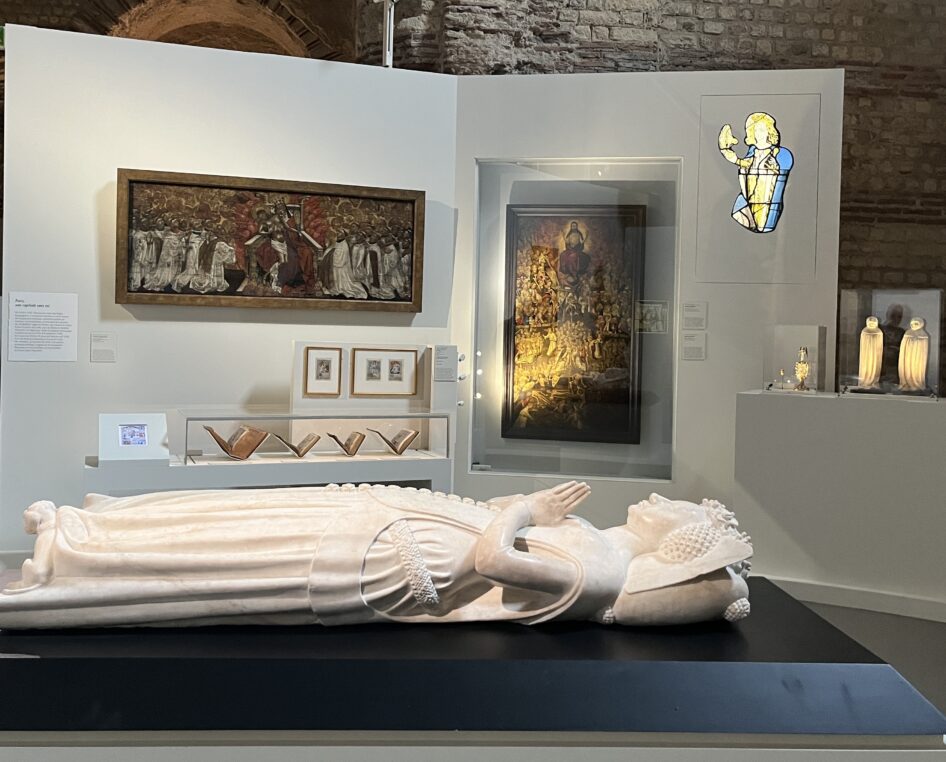
Tomb of Anne de Bourgogne, Duchess of Bedford, 1436-1442, Paris Musée du Louvre with Jean Hancelin, “Trinité aux chanoines”, in the back and some Livres d’heures from Bnf
At BNF Richelieu, a superb exhibition on the same period “L’invention de la Renaissance”, just started. It was programmed a few years ago and was postponed by Covid. And next week starts a special exhibition at Cluny, “Le Trésor d’Oignies”, a Belgian collection of XIII th century silver from the Priory of St Nicolas d’Oignies, is lent by the Namur Museum, until October 20.
Share this Post
